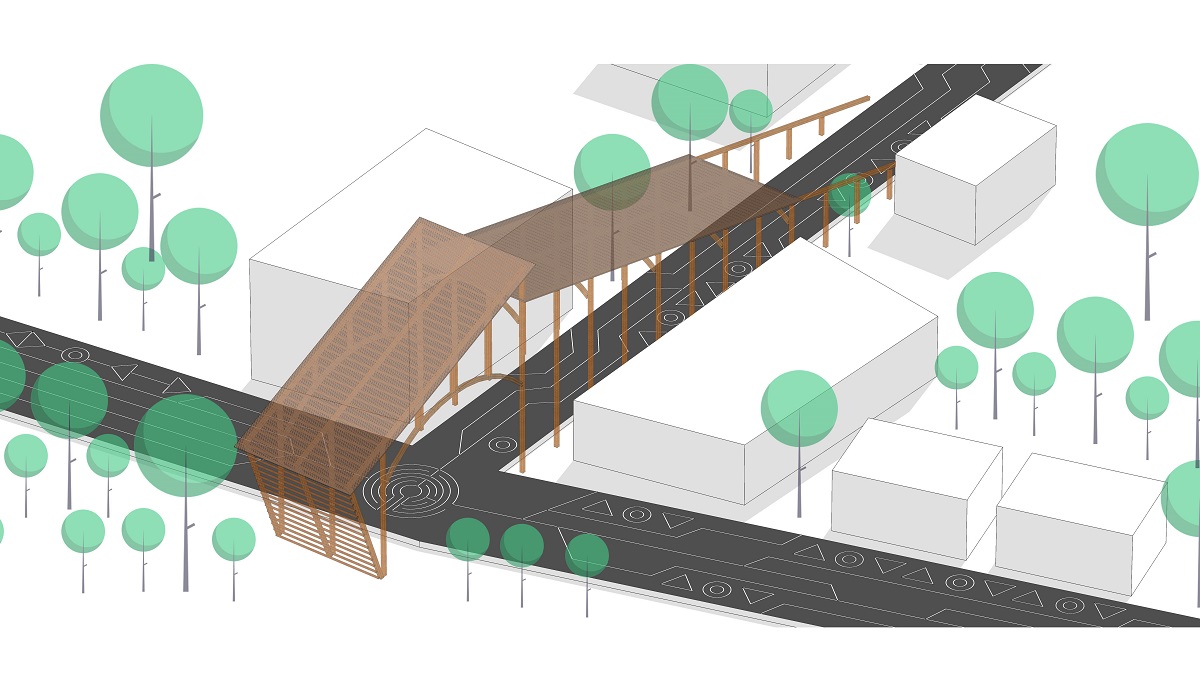Submitted by Rashi Jain
Art in everyday space creates awareness for social distancing measures in Kanaipur, West Bengal
India Architecture News - Aug 22, 2020 - 13:39 9718 views

Kanaipur is a village in Hooghly district of West Bengal, India. Like any other place in India it is also affected by Covid-19 pandemic. The first person who became Covid positive locally was a vegetable vendor. Due to which the main market was shut down immediately and the vegetable vendor's became mobile. They started to enter to the rotundas, alleys and even stopping by the entrance of the households to sell vegetables which made the area more vulnerable and created more chances of the infected transmission.
Looking at the situation, two young architects Soumyodeep Das and Ayan Roy came up with an idea of making a street art to control the transmission. Art always has been an integral part of human life, and has accompanied architecture in diverse parallels. While designing the 25th year Durga Puja pavilion this year in the locality based on the theme of “chakrabyuho” or the maze that derived from the epic of Mahabharata. The street art was also based on the same theme which runs along 1,500-feet (457-metre) to aware people to maintain social distancing, and restrict the virus transmission.

The art work was made by involving different stakeholders as people from the local municipal corporation, the local sports club and volunteers from the neighborhood. The concept was ideated by team VBridge, and it took 48 hours continuously to complete the art work.
Symbolism, it's influence and significance in Indian History
Art has always affected the mankind through its different forms, shapes and interpretation. Taking symbols from the day to day life creates a connection and dialogue with the people enabling the art to interact along with giving social messages to the society. Using basic geometry like lines, triangle, and circles deriving from the concept of Chakrabyuho from the epic of Mahabharata gives rise to a context which is familiar to everyone. Street art interacts with the larger public and has the capacity to subjectively engage the perspective of every individual.

Art has always been an integral part of architecture and Indian living. Keeping in mind the post Covid-19 scenario, certain norms and regulations has to be maintained to stay safe, using art as an inspiration is the new regime for artists and architects around the globe. Art is always used as a medium to spread awareness as it is relatable and impacts the human senses, it is accessible to everyone and has its existence since the human civilization. Now in Kanaipur, it is helping people to maintain social distancing along with giving the street a new discourse and identity. Encouraging behavioral change among the locals, it is also re-rooting its significance in day to day life.

Traditionally art was a part of everyday spaces in the Indian context. Use of symbolism, motifs, patterns inspired from nature or displaying them in the households, neighborhoods was very common in the earlier context but now has become rare in the community.
Architecture is incomplete without art and for centuries, it exists in the same pockets transforming spaces, behavior and communities.

Video by VBridge
All Images © VBridge
